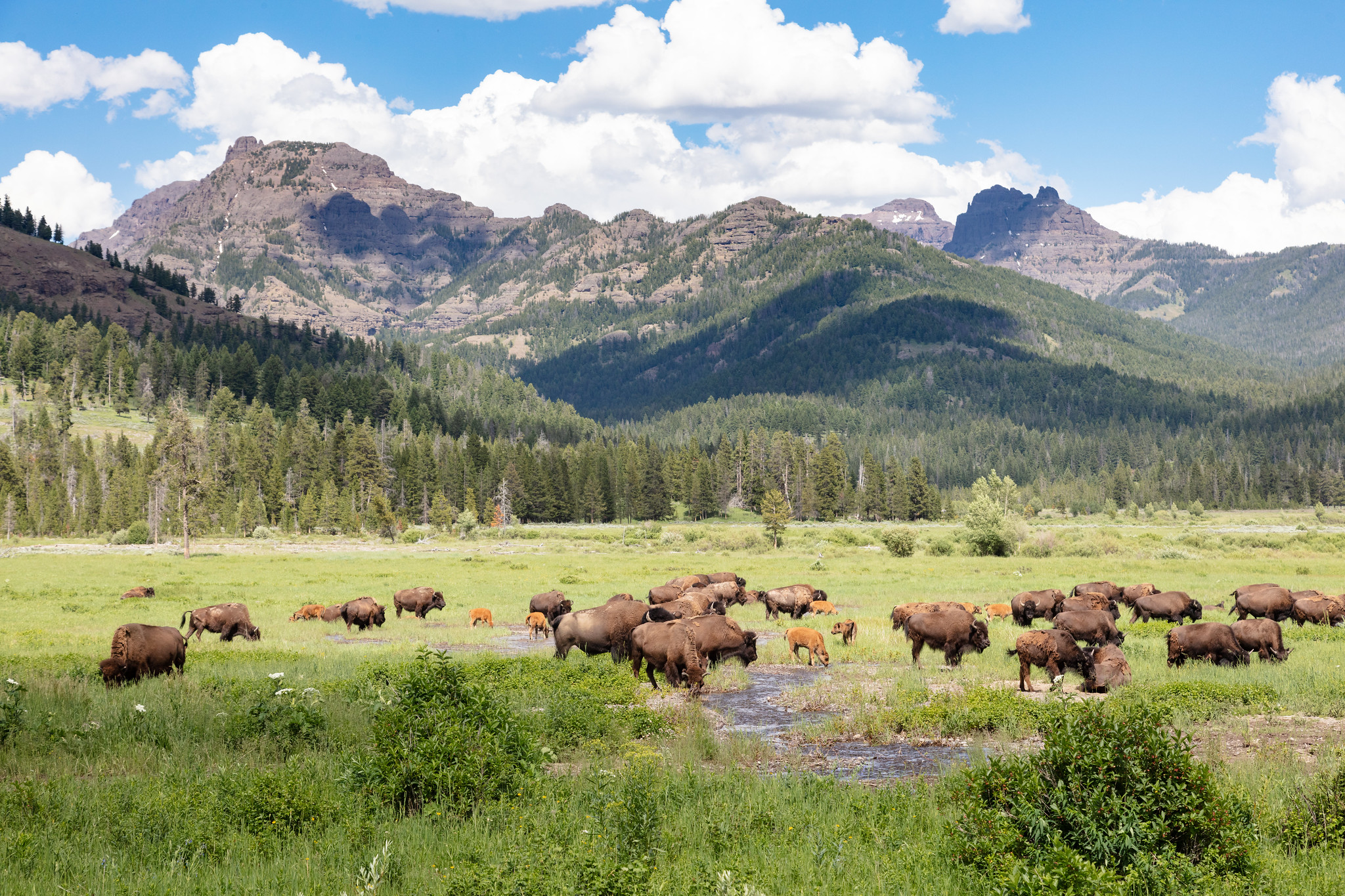News Release

NPS / Jacob W. Frank
|
Subscribe
|
Contact: Morgan Warthin, (307) 344-2015
MAMMOTH HOT SPRINGS, WY – Today, July 24, the National Park Service (NPS) announced a decision about the future management of bison at Yellowstone National Park. The Record of Decision, a culmination of an Environmental Impact Statement (EIS) and National Environmental Policy Act process that began in 2022, will allow the NPS to manage bison based on new scientific information and circumstances that have changed since the previous EIS, completed in 2000.The NPS is implementing this decision because of new scientific information about bison and brucellosis transmission and changed circumstances that include fewer cattle near the park, brucellosis regulations, and Tribal hunting. The NPS was also under court oversight to complete this decision due to litigation in 2018 and 2019 that challenged the adequacy of the original Interagency Bison Management Plan (IBMP) 2000 decision.
This decision describes the actions the NPS will take to manage bison within Yellowstone. It also sets conditions over how the NPS will support its partners in their efforts outside of Yellowstone as multiple federal, state, and Tribal entities have some authority over managing bison as they migrate out of the park.
The decision continues the original purpose of the IBMP to maintain a wild, free ranging bison population and reduce the risk of brucellosis transmission from bison to cattle. It also solidifies the significant progress made over the past two decades by the IBMP partners.
Through this decision, the NPS will prioritize working with American Indian Tribes to transfer brucellosis-free bison to Tribal lands and use harvests to control bison numbers to the extent feasible.
The NPS will continue to support a bison population range that has allowed the park to successfully maintain spatial and temporal separation between bison and cattle outside the park, resulting in zero brucellosis transmissions over the last two decades. The population range protects the genetic integrity of the species and the important role bison play in the ecological balance of the park. It also preserves an ecologically sustainable population of wild, migratory bison.
The decision considers the limited summer and winter habitat outside the park and acknowledges the NPS does not have jurisdiction or control over actions such as hunting or tolerance for bison beyond the park boundary.
Finally, the decision boosts economic spending in surrounding Montana communities and improves visitor experiences since bison are one of the most popular animals for visitors to view in the park.
"We have come a very long way since the last bison management plan was signed in 2000," said Superintendent Cam Sholly. "This new plan solidifies much of the progress made over the past two decades and provides a foundation for future decision making. We appreciate the significant engagement on this plan by our affiliated Tribes, partners, and the general public."
Yellowstone National Park will implement this decision (Alternative 2, the preferred alternative in the EIS) in the following ways:
- Bison will be managed within a population range of about 3,500 and 6,000 after calving and average about 5,000, consistent with the 10-year average.
- The NPS will work with IBMP partners to control bison population numbers using:
- Bison Conservation Transfer Program (BCTP) to restore bison to Tribal lands.
- Tribal Food Transfer Program* (TFTP) to provide meat and hides to Tribes.
- Tribal and state harvests outside the park.
- The NPS will prioritize the BCTP and place bison in the BCTP when bison migrate to the park boundary and there is space in the facility.
- The NPS will establish a population assurance threshold of 5,200 bison. This action was not in the original IBMP.
- When the population reaches this threshold, the NPS will begin to manage for a declining bison population by relying primarily on Tribal and state harvests.
- If harvests do not reduce numbers, the NPS will remove additional bison through the TFTP.
- When the population is below 5,200, the NPS will only place bison in the BCTP and use the TFTP to remove brucellosis-positive bison that are identified when animals are selected for the BCTP.
- If the late-winter population nears 3,000 animals, the NPS will protect the population inside the park and encourage partners to reduce hunting outside the park.
Yellowstone National Park will begin to implement this decision immediately.
Find the Record of Decision and additional information here: https://parkplanning.nps.gov/YellowstonebisonEIS.
Editor’s note: *The park used to refer to this as shipment to slaughter.
Last updated: July 24, 2024
